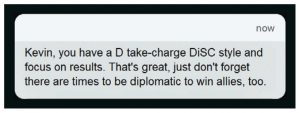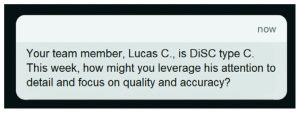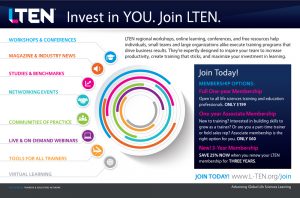 Pull-Through Your Personality Profiles
Pull-Through Your Personality Profiles
Technology – By Kevin Kruse
Almost every life sciences representative and manager has at one time or another completed a behavioral assessment with the goal to understand and adapt to different behavioral styles. Many organizations use Insights Discovery, others use Everything DiSC, or EQ-i, and still others use CliftonStrengths (formerly called StrengthsFinder).
Insights and the Knowing-Doing Gap
But how many people actually remember their full results three months, six months or a year later? How many managers remember the results of their team members? Most importantly, how often do people actually apply their Insights, DiSC or other profile to improve their communication, conflict resolution and overall effectiveness?
 The huge chasm between what we know and what we apply back on the job has been called the “knowing-doing gap.” It’s estimated that 40% to 85% of all training becomes “scrap learning,” relegated to knowledge forgotten or never applied.
The huge chasm between what we know and what we apply back on the job has been called the “knowing-doing gap.” It’s estimated that 40% to 85% of all training becomes “scrap learning,” relegated to knowledge forgotten or never applied.
There are many potential reasons why people don’t apply behavioral profile results over the long term, but it doesn’t take a research study to see that we are all so “crazy busy” that we generally operate with short-term thinking in task-mode. It’s hard to remember our own style, others’ styles and to take the pause – the long deep breath – to think and modulate our approach.
Traditionally, a variety of aids have been used to help people remember their unique profile. The classic, of course, is the colorful LEGO-style blocks provided by Insights. And people who complete CliftonStrengths often put their “signature themes” in the footer of their emails. But those tactics don’t help us to remember or to act on the profiles of our team members.
Behavioral Nudge Theory
But what if you had an Insights/DiSC /CliftonStrengths coach who would message your phone once a week to remind you of your profile and how to leverage it? These little reminders are called behavioral nudges. And nudges can make a dramatic difference in human behavior and can substantially close the knowing-doing gap.
A nudge is just an indirect suggestion or subtle reminder intended to influence people’s behavior. Officially, the term “nudge” was defined and popularized by two professors of economics, Richard Thaler and Cass Sunstein.
AI-Powered Nudge Engines
Today, life sciences trainers have access to digital platforms powered by artificial intelligence (AI) that make sending nudges far easier than ever before. Recently, a pharmaceutical company deployed the Everything DiSC assessment to its 600-person field force, along with 60 district business managers. The assessment was used to obtain deeper insights into dominant behaviors, and to help everyone to optimize their communication, motivation and conflict resolution.
Knowing that the results of the DiSC workshops would be fleeting, the company deployed an AI-powered digital coach (via iOS mobile app) on everyone’s smartphone. Each Tuesday, everyone receives a message on their phone reminding them of their own unique profile. (Figure 1)
Additionally, the virtual personality coach sends a nudge each Thursday to remind the district business managers of the profile of one of their direct reports, along with a tip about how to best motivate or grow them. (Figure 2)
Develop a Pull-Through Strategy
If you think tactics from behavioral science may be a good supplement to the training and development programs you are already offering, here are some questions to consider:
- Who should get the nudges? Everyone who takes Insights/DiSC /CliftonStrengths? Or only managers?
- How often should the nudges be delivered? Once a week? Twice a week? More?
- How long should the nudge reinforcement strategy be used? Ninety days after the training to ingrain the habit? One full year to reinforce the learning? Forever, because people’s teams change?
- How will you inform employees that their behavioral profile will be known by
colleagues? Do you inform them of that now?
 From Training to Reinforcement
From Training to Reinforcement
Leadership is about behaviors, and even motivated managers struggle to move from task-orientation to people-focused behaviors. While there is no silver bullet, we know that more training and LEGO-style blocks probably aren’t the answer. With today’s digital technologies — from email to messaging to audio messages — it’s easier than ever before to add behavioral nudge campaigns to DISC assessments, and to defeat the knowing-doing gap.
Kevin Kruse is the CEO of LEADx. He can be reached at kevin@leadx.org.











